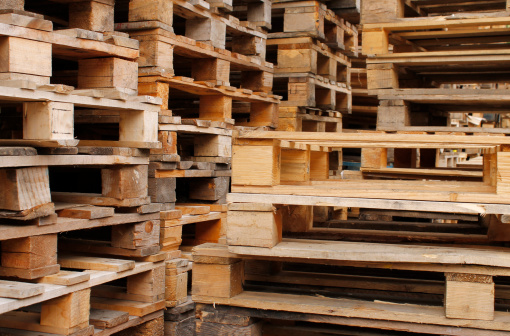Wood prices are going up in 2014 as a result of a combination of increased competition, bad weather, and a lack of production capacity. Yet the demand for pallets remains high, so if pallet producers want to stay on top of the market, they have to come up with creative solutions to make the most of their supplies and meet client demand. Here are some of the factors weighing on the market:
Hardwood Market Conditions
High demand and low production have combined to eat into the available supply of hardwood lumber. The winter was tough on the timber industry in eastern North America, leading to fewer logs being harvested. This short supply has driven up prices, which has led traditionally high-end hardwood users to buy lower grades of wood for flooring and furniture, leaving the pallet industry facing stiffer competition than usual.
Hardwood forests west of the Mississippi didn’t fare much better: they couldn’t be logged as much over the winter because of the unusually harsh weather. And a looming labor shortage – created because fewer people are willing to do the tough work of lumber harvesting – isn’t helping matters anywhere.
While supplies are tight, this is not due to a lack of trees in forests: there is more timber available for harvest today than there was fifty years ago. The problem lies in the ability to harvest the wood and get it to customers, such as pallet producers.
Softwood Market Conditions
Some companies that have used hardwood pallets in the past may want to consider switching over to more plentiful softwoods, such as Southern Yellow Pine (SYP) or Spruce Pine Fir (SPF), but this will also present challenges for pallet manufacturers since the demand for pine is also increasing.
Sawmill Capacity
For hard or softwood, domestic sawmill capacity remains an issue for pallet producers. Dwindling product availability and price erosion has resulted in many hardwood mills failing in the past several years. Softwood mills, on the other hand, are selling more lumber to other users, pitting pallet makers against other industries that can afford to pay more for lumber.
What About International Imports?
It used to be economical to ship from overseas. When construction was booming in the United States and Canada, pallet makers could save money by piggybacking on lumber shipments meant for that industry. This isn’t much of an option now, though future economic growth may well turn the tide once again in favor of importing lumber from overseas.
In addition to importing from Canada, some pallet production companies are looking at buying lumber from South American countries such as Chile, Uruguay, and Brazil. There was a time when the shipping rate per thousand board feet was low enough to make the distance worthwhile, but that isn’t the case now. A well, most South American softwood production has been diverted to China and other more lucrative markets, which has cut into availability for North American pallet makers.
Pallet makers that consider buying from European lumber companies face the same dilemma of differential shipping costs: in the end, paying more for local pine or hardwood might still be cheaper than buying from a company in Eastern Europe.
Implications for Pallet Buyers
Even if lumber production does catch up to domestic demand, inflation and pressure on supply from competing buyers virtually guarantee that hardwood and softwood prices per thousand board feet will remain higher than in the past.
Lumber is the single most expensive element in pallet manufacturing. While customers are never thrilled by price increases, pallet buyers are going to have to accept that higher costs are a part of doing business. As long as pallet companies have to compete with other buyers for timber, pallet prices will remain elevated.





